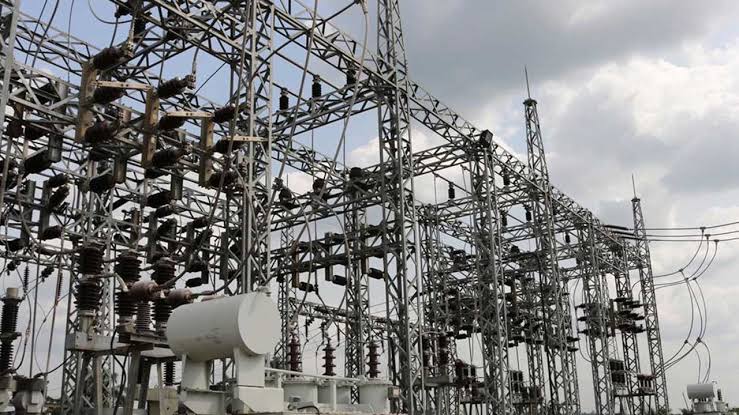Nigeria Converts Power Arrears To Sovereign Debt
Nigeria issues ₦4trn bonds to settle GenCo arrears; USDNGN=X stability and EMB spreads will gauge whether liquidity lifts dispatch sustainably or shifts risk onto the sovereign curve as CL=F volatility and local yields drive refinancing pressure.

Nigeria’s plan to issue ₦4 trillion in sovereign bonds to clear verified arrears owed to generation companies and gas suppliers signals a shift from ad hoc forbearance to rule-based liability management. The conversion crystallizes roughly 4% of the existing public debt stock, which already exceeds ₦100 trillion, and amounts to about 1.0–1.2% of GDP on current naira and nominal output assumptions for 2025. The policy objective is straightforward: restore payment discipline across the electricity value chain so generators can service bank obligations, pay for gas, and lift dispatch, while suppliers regain confidence to deliver fuel without cash-flow risk or FX uncertainty.
Mechanically, the arrears will be exchanged for multi-tranche paper likely spanning 7–20 years, with coupons aligned to local sovereign yields in the mid-teens. Moving liabilities from intermediaries to the federal balance sheet stabilizes generator cash positions and enables long-deferred maintenance. If arrears clearance restores gas flows and reduces forced outages, average output could rise from roughly 4,200 MW in 2024 toward 5,000–5,500 MW through 2026, narrowing a supply gap that has pushed firms into costly self-generation. The settlement compresses counterparty risk and should reduce the weighted average cost of capital for operators, but durable improvement requires tariff progress toward cost recovery and enforceable gas-to-power contracts.
The macro arithmetic is two-sided. Debt-to-GDP, in the mid-40s percent range, edges higher, but the binding constraint remains debt service relative to federal revenue, already elevated. Unless revenue measures advance or spending is re-sequenced, interest outlays will rise as the new bonds season on the curve. Crowding-out risk is material if issuance coincides with heavy Treasury bill rollovers; banks and pension funds may tilt toward sovereign duration, tightening financial conditions for corporates and subnationals. Still, the real-economy impulse is tangible: improved electricity availability should ease logistics bottlenecks, lower unit energy costs, and support a 0.3–0.6 percentage-point lift to real GDP over 12–18 months if dispatch gains persist.
Currency and inflation dynamics frame execution risk. With headline CPI in the high-20s to low-30s and the naira volatile, the conversion must not amplify FX pressure. If supply steepens the local curve, higher carry could attract portfolio flows and stabilize USDNGN=X within a defined corridor, but any deterioration in fiscal expectations would lift term premia and widen the risk premium. External reserves near the low-to-mid-$30 billions provide a buffer but not a wide one if oil receipts undershoot or import demand remains firm. Higher crude prices (CL=F) improve fiscal receipts and FX supply yet also raise domestic energy costs, complicating tariff politics and CPI control.
For market structure and credibility, the signal is constructive. Crystallizing quasi-fiscal arrears into securities replaces payment pledges with legal instruments and a clearer creditor hierarchy. That approach can deepen the domestic investor base if duration and coupons are calibrated to local absorption capacity and if issuance is sequenced to avoid dislocations on the NGN curve. Internationally, investors will parse frontier risk through broad proxies such as EMB and duration via ^TNX, alongside local indicators. If 10-year local yields stabilize rather than gap wider and USDNGN=X trades within a narrowing band as liquidity operations and FX management align, the move will read as disciplined liability management rather than fiscal drift.
Execution risk remains high without structural reform. Technical and commercial losses are still elevated, metering gaps persist, and collection rates trail cost recovery. Absent tariff rationalization, loss-reduction targets, and contract enforcement for gas delivery, arrears can rebuild—only now on the sovereign’s balance sheet. The credible path threads three constraints: hold the primary balance near or above zero, avoid exchange-rate overshoot, and lift generation enough to raise non-oil output.
By mid-2026, success is observable if generation sustains above 5,500 MW, the sector cost-recovery ratio approaches 0.9, the debt-service-to-revenue ratio trends lower, and USDNGN=X remains inside a 1,550–1,650 range while EMB avoids a structural widening. Failure on those metrics would confirm a temporary liquidity fix that raises sovereign risk without resolving the sector’s structural deficit.





